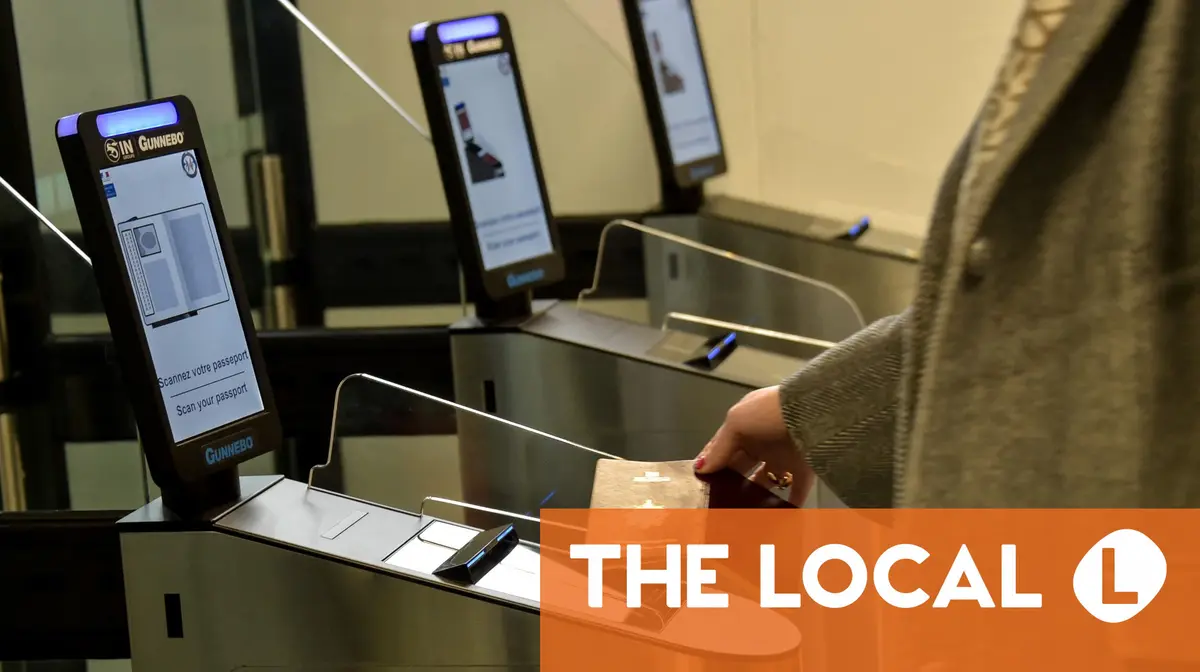Austria will soon introduce two major EU border systems: EES and ETIAS. Here’s what residents and travellers need to know before they go.
Two major changes to how non-EU citizens enter and exit the Schengen area are due to roll out between late 2025 and 2026. Here’s what residents and travellers in Austria should expect.
After multiple delays, the EU is preparing to launch the Entry & Exit System (EES) in October 2025, followed by the European Travel Information and Authorisation System (ETIAS) in late 2026. These systems will replace manual passport stamping and introduce new checks at external Schengen borders—including Austria’s airports and land crossings.
EES will introduce biometric passport registration and track days spent in the Schengen zone, while ETIAS is a digital visa waiver that must be applied for in advance by travellers from visa-exempt countries.
READ ALSO: EXPLAINED: What happens if you overstay your 90-day limit in Austria?
EES (Entry & Exit System)
When does EES start?
The current start date is October 12th 2025, with a phased introduction over six months. Not all airports and border posts will enforce it immediately, and authorities will be able to suspend EES checks temporarily in case of long delays.
What does EES do?
EES automates border controls using facial recognition and fingerprints, and records entries and exits to enforce the 90/180-day rule for non-EU citizens.
Do I need to register if I live in Austria?
No. If you are a non-EU citizen with a valid Austrian residence permit or long-stay visa, you are exempt from EES. However, border procedures are not yet fully defined. Current guidance is to avoid automated passport gates and instead use a staffed border booth where you can present both your passport and residence card.
What about dual nationals?
Travellers with both EU and non-EU passports are exempt if they travel on their EU passport. If they enter on their non-EU passport, EES applies.
Advertisement
Do visa-holders need to register?
No. Anyone with a valid visa, including short-term Schengen visas, is exempt from EES.
What if I own property in Austria?
Second-home ownership does not provide exemption. If you do not hold a visa or residence permit and are travelling under the 90-day rule, you will be required to register with EES.
How does registration work?
The first time you cross an external Schengen border after EES is introduced, you will complete biometric registration at the port of entry. This includes a facial scan, fingerprinting, and a short questionnaire. After that, only a passport scan will be required—until your passport changes. There is no way to register online in advance. Any website offering this service is fraudulent.
Does EES have a fee?
No. There is no charge to register.
READ ALSO: Does an Austrian residency permit allow you to ignore the Schengen 90 day rule?
ETIAS (European Travel Information and Authorisation System)
When does ETIAS start?
ETIAS is expected to begin in the final quarter of 2026. Like EES, it will have a six-month transition phase. During this time, travellers without ETIAS will be allowed entry but informed about the new requirement.
What does ETIAS do?
ETIAS is a visa waiver for short-term visits by citizens of visa-exempt countries such as the UK, USA, Canada and Australia. Travellers must apply online in advance, pay a €20 fee, and receive authorisation before entering the Schengen zone. The permit lasts three years or until your passport expires.
Advertisement
Are residents of Austria exempt?
Yes. Non-EU citizens living in Austria with a valid visa or residence permit are exempt from ETIAS and can continue to enter the Schengen zone as usual.
What about second-home owners?
If you hold a visa, you are exempt. If not, you will need ETIAS authorisation, even if you regularly visit Austria.
Do I need ETIAS for a short visit?
Yes. The requirement applies regardless of how short the trip is.
READ ALSO: Reader Question: Does a passport renewal restart the 90 day clock for visiting Austria?
Are pensioners and children exempt?
Travellers over 70 and under 18 are still required to register for ETIAS, but they are exempt from the €20 fee.
Can I apply now?
No. The application system has not launched yet. It is expected to go online a few months before the scheme begins. Any website offering to process ETIAS now is a scam.
Advertisement
Will travellers be turned away without ETIAS?
Not at first. For six months after launch, people without ETIAS will still be allowed to enter but will be informed of the new rules. After spring 2027, border guards may begin denying entry to those without the necessary authorisation.
Residents of Austria are mostly unaffected by these changes, but travellers from visa-exempt countries should begin preparing for the new requirements. Confusion and delays are likely in the early phases, particularly at busy airports and land crossings, so allow extra time and stay informed about the rollout in your departure and arrival countries.
READ ALSO: How can British second home owners spend more than 90 days in Austria?
